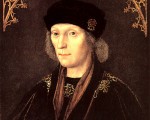
We couldn’t have picked better weather for our full day at Hever Castle! Blue skies and sunshine were perfect for appreciating the beauty of the castles and its stunning gardens.
We started our day with a lovely breakfast in the private Astor Wing before heading over to St Peter’s Church, just outside the castle grounds, to see the tomb and brass memorial of Thomas Boleyn and the little brass cross of Henry Boleyn. Then it was time to enjoy everything the castle has to offer – the castle interior with its large portrait collection, exhibition celebrating Hever Castle’s use in films and on TV (including two beautiful dresses worn by Genevieve Bujold in “Anne of the Thousand Days”), the gardens the gift shop and Hever ducks and swans.
[Read More...]



















